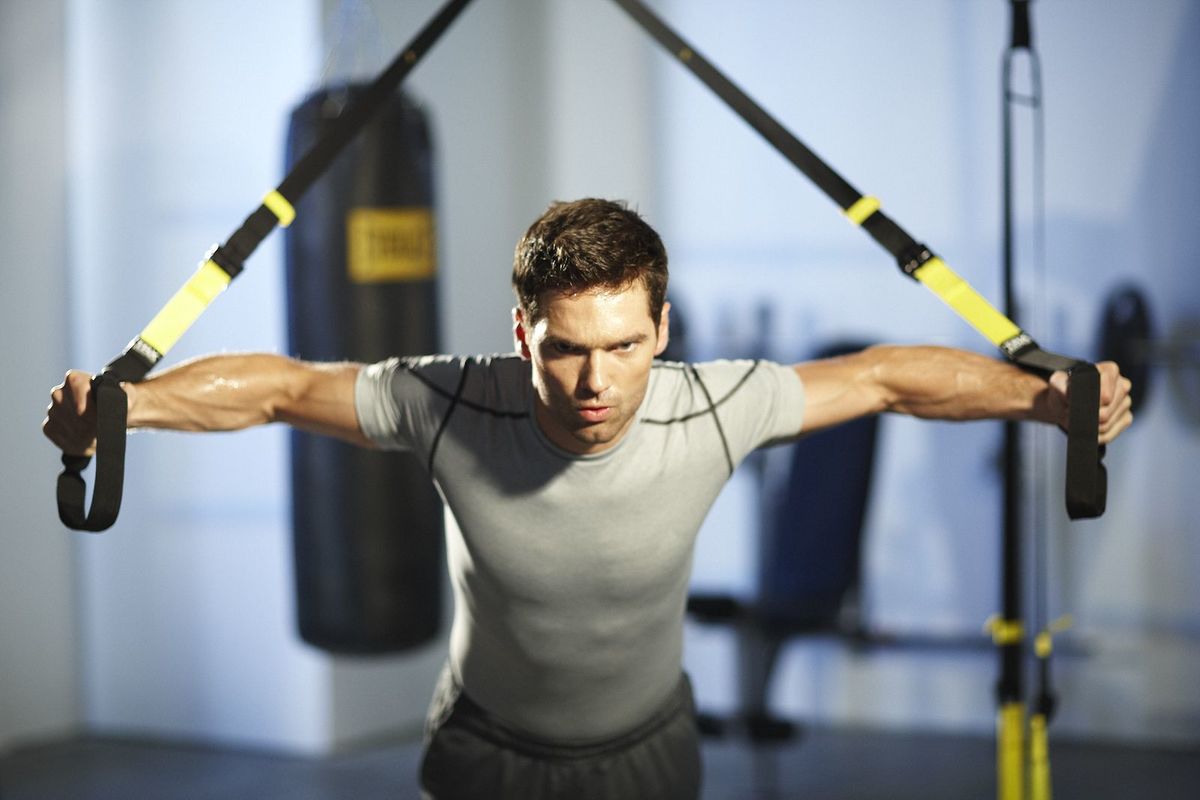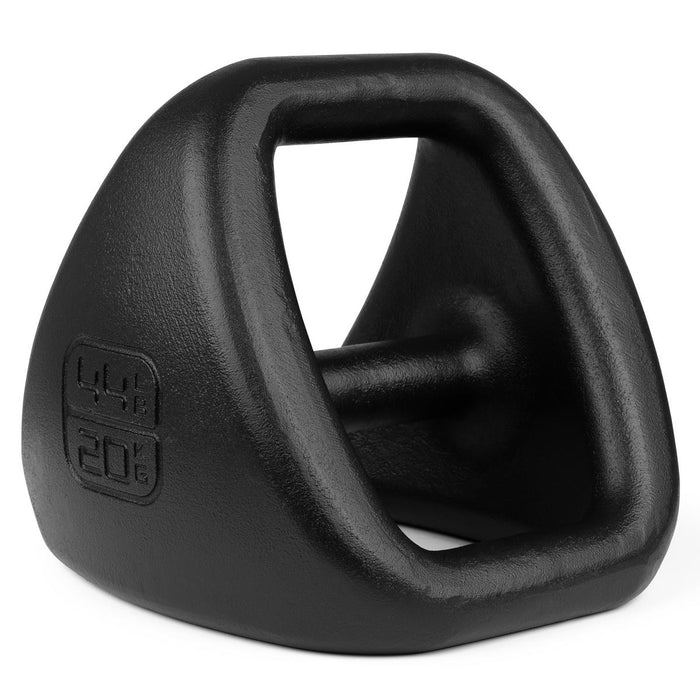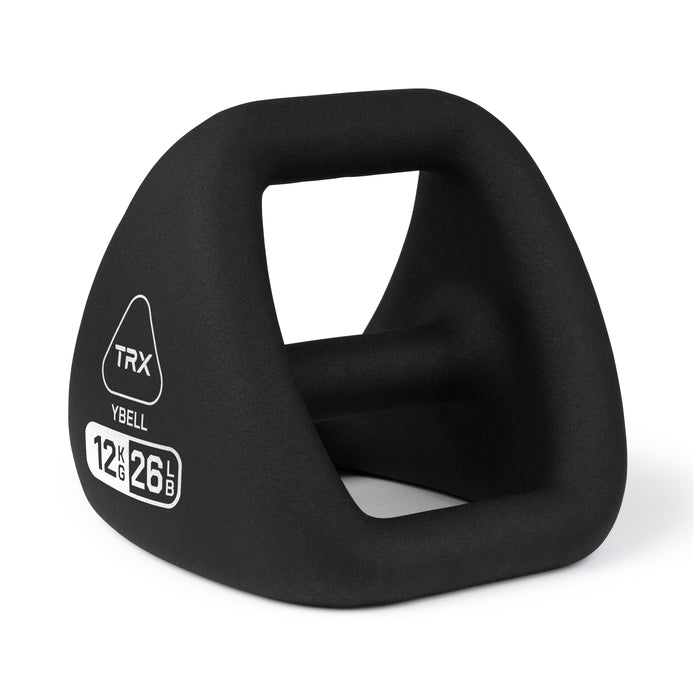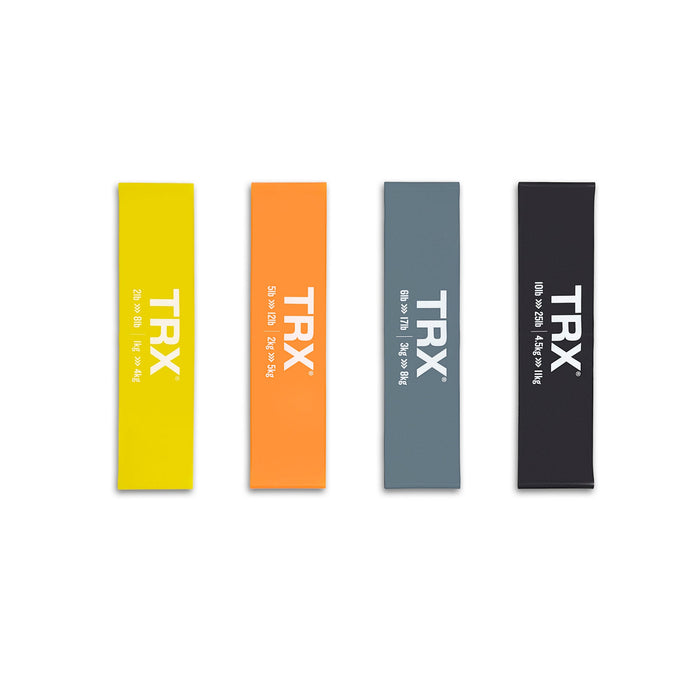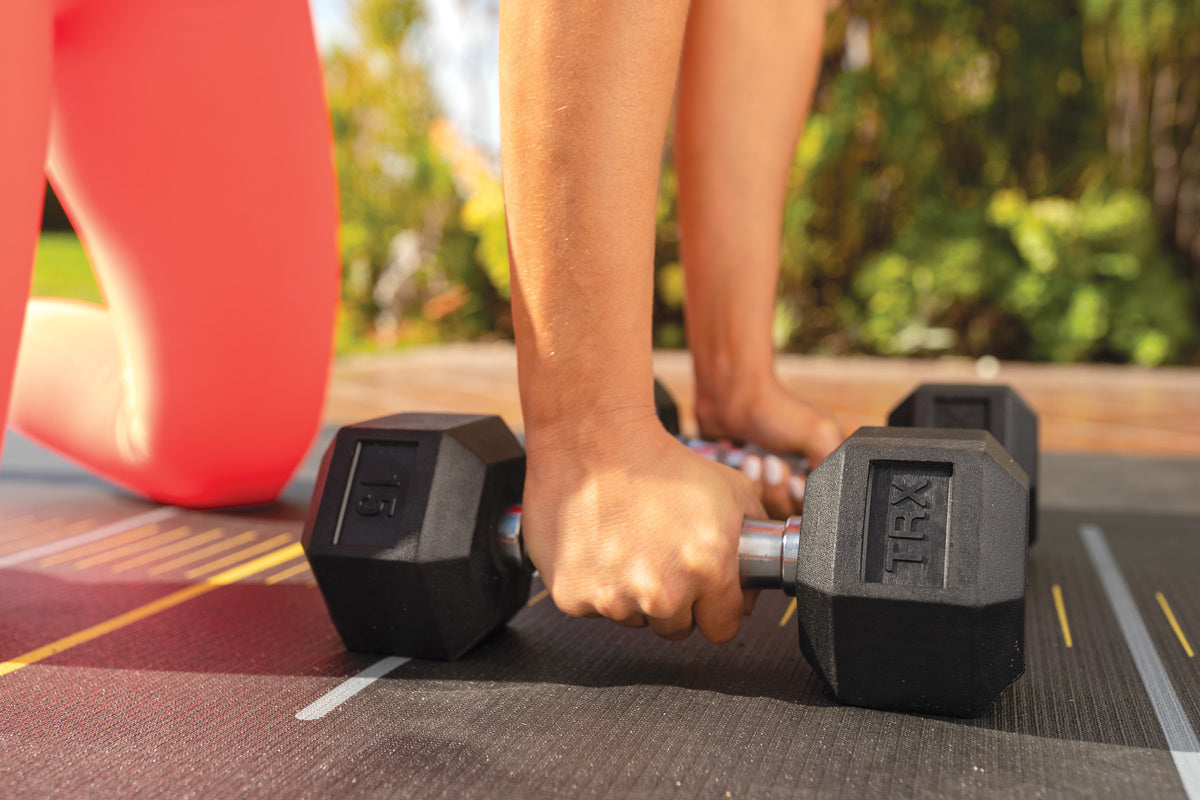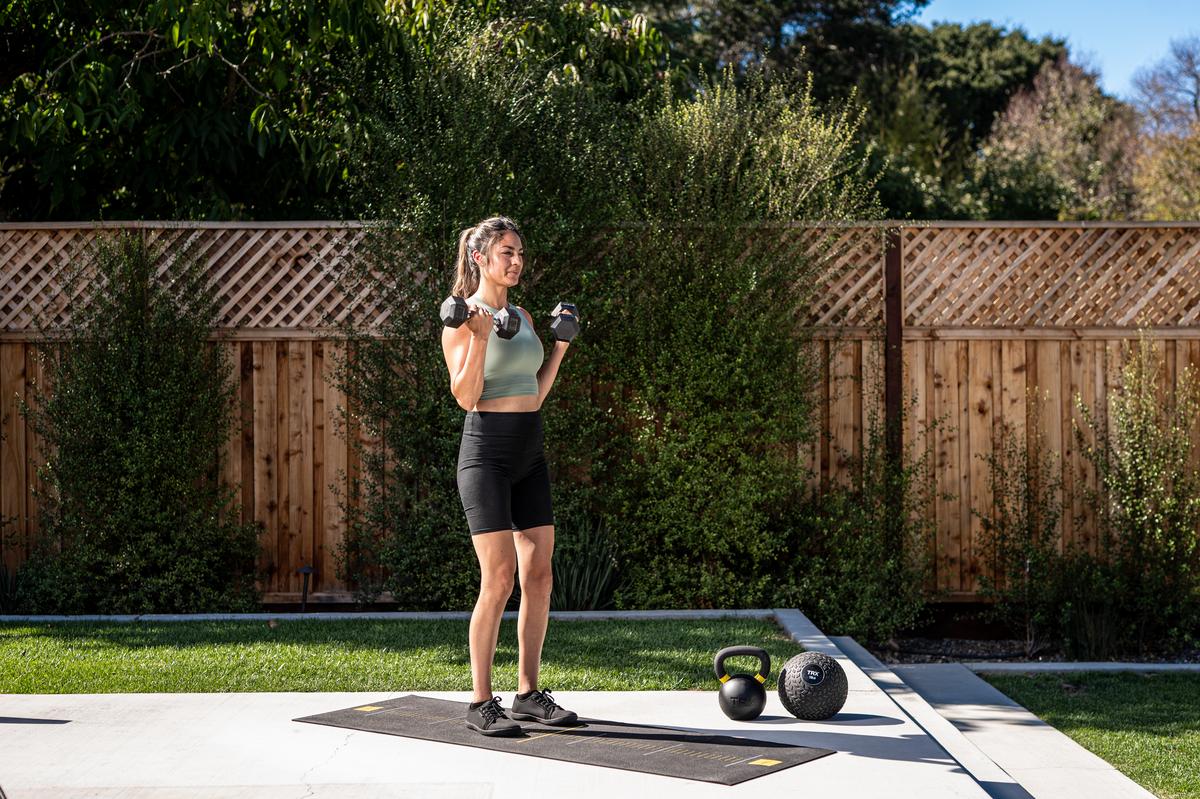Broad and defined shoulders are a staple for upper body aesthetics, showcasing a strong upper body and creating an illusion of a smaller "v-taper” waist. Added bonus: training the shoulders will also help with stability and injury prevention, better functional movement patterns, and better posture.
Why Should You Do Shoulder Supersets?
You should do shoulder supersets because supersets focus on intensifying the workload of your entire shoulder. Want to find the perfect shoulder superset combinations for your strength level? Take our quick assessment quiz to get a personalized training plan. This can lead to a variety of benefits such as increased muscle stimulation, metabolic stress, and a better mind-muscle connection. Let's take a look at each benefit more in-depth:
Benefits of Compound Supersets:
- Increased Muscle Stimulation: Compound sets target the same muscle group or closely related muscle groups with consecutive exercises. This increased workload volume and stimulation can lead to greater muscle fiber recruitment and activation, promoting muscle growth and strength development. (1)
- Time Efficiency: By performing two exercises back-to-back without rest, compound sets allow you to work multiple muscle groups or movement patterns in a shorter amount of time. This can be particularly beneficial for individuals with limited time for their workouts.
- Metabolic Stress and Fatigue: Compound sets create a higher level of metabolic stress and fatigue within the targeted muscle group. This can be beneficial for individuals aiming to improve muscular endurance, as well as those seeking to enhance their overall metabolic conditioning.
- Plateau Breaking: If you've reached a plateau in your training progress, compound sets can provide a novel stimulus to help break through that plateau. By challenging the muscles in different ways and introducing variation, compound sets can stimulate further gains in strength and muscle development.
- Enhanced Workout Intensity: The continuous nature of compound sets keeps the muscles engaged and under tension for an extended period. This can lead to a more intense workout compared to traditional sets with rest intervals, potentially resulting in improved muscular endurance and hypertrophy.
- Mind-Muscle Connection: Performing consecutive exercises for the same muscle group can enhance the mind-muscle connection. By maintaining focus on the targeted muscle throughout both exercises, you can improve muscle activation and optimize your training effectiveness.
Shoulder Superset #1: Mobility-Based
Mobility refers to the ability of a joint to freely and efficiently through a full range of motion. Shoulder mobility exercises are essential for injury prevention, enhanced movement patterns, and improved performance during lifting exercises.
The following shoulder superset will look at is focused on helping build your shoulder’s overall mobility:
1A. Band Overhead Sweep
Otherwise known as banded “up and overs” or “pass-throughs”, this mobility exercise enhances scapular retraction and depression while focusing on mobility with a light to moderate load.
- Begin holding a light, long band slightly wider than shoulder width apart
- Give the band a slight pull to feel a contraction behind your shoulder blades.
- Maintaining this contraction, rotate the arms up and over your head as far behind your body as possible.
- Pause for a moment and then return to the starting position. To make this exercise easier, use a lighter resistance band or begin with a slightly wider grip.
1B. Long Band Pull-apart
This is a great exercise for emphasizing scapular retraction and depression, shoulder external rotation, and a general opening of the chest and enhancing the posture before a workout filled with overhead movements.
- Begin by holding onto a long and light resistance band slightly wider than shoulder width apart with the palms facing upward.
- Keeping the shoulders away from your ears and engaging behind the shoulder blades, pull the band apart until it touches your chest.
- With control, return to the starting position.
Coach’s Programming:
Perform exercise 1A for a set of 10. With minimal rest, perform 10 reps of exercise 1B. Rest for 1 minute and repeat for 3 rounds.
Shoulder Superset #2: Strength and Power-Based
To develop strength and power, you can use a “trick” called post-activation potentiation or “PAP”. PAP is a phenomenon in exercise physiology that harnesses the body’s neurological response from a heavy strength-based lift paired with an explosive plyometric movement. (2)
The heavy lift induces neural and physiological changes that temporarily increase the muscle's ability to generate force and power. With this superset, we will focus on building strength by using PAP to generate more explosiveness with your movements.
2A. Barbell Overhead Press
Otherwise known as the shoulder press, strict press, military press, or standing press, this compound exercise is a gold standard for shoulder strength.
- With a barbell in a racked position about chest height, set a strong and stable stance and grasp the bar with an overhand grip slightly wider than shoulder width apart.
- Pretend to “bend the bar” to promote lat engagement and shoulder stability and press the barbell overhead.
- Slowly lower to the starting position and repeat.
If this movement creates a pinching in your shoulders, or you lack the mobility to properly press overhead, consider the option of replacing the barbell with dumbbells.
2B. Wall Ball
Shortly after completing heavy overhead presses, the wall ball exercise is a perfect overhead power movement, harnessing the potentiated motor units for ultimate power and strength development.
- Begin with a weighted ball that is challenging, yet light enough to be able to throw with speed and power.
- Hold the ball at chest height about 2 feet in front of a wall, feet positioned at shoulder-width apart.
- Engage your core, squeeze the ball tightly, and drop your hips down and back.
- Simultaneously stand up while driving the ball to a target 8-10 feet high, keeping your arms extended.
- Catch the ball, return to the squat position, and repeat.
Coach’s Programming:
To harness the benefits of PAP, complete 4 reps of exercise 2A at 80% of your 1RM. After a 15-second rest, complete 5 reps of exercise 2B. Rest for 3 minutes and repeat for 3 rounds.
This is a great shoulder superset to substitute with our TRX legs and shoulder workout.
Shoulder Superset #3: Hypertrophy-Based
Muscle hypertrophy training lives in the 10-12 rep range. It is mostly stimulated by working to momentary muscular fatigue with a higher volume of training. Our third shoulder superset will focus on hypertrophy so we can tone your upper body muscles.
3A. Dumbbell Lateral Raises
This dumbbell lat exercise is a popular muscle isolation movement that primarily focuses on the lateral or medial head of the deltoids, making them appear wider and more developed.
- Begin with two dumbbells hanging by your side, palms facing toward your legs.
- While maintaining a strong and stiff torso and a slight bend in the elbows, elevate the arms until they are parallel with the floor.
- Lower the dumbbells with control so that they stop about 30 degrees off of the thighs to maintain constant tension in the muscles, and repeat.
3B. Cable Rear-Delt Fly
This exercise is a perfect pairing with dumbbell lateral raises because the smaller rear-delt muscles are often undertrained but are important for both posture and rotator-cuff health.
- Begin by gripping the cables of a high cable crossover machine, palms facing downward, the left cable will be in the right hand and vice versa.
- Keeping the elbows slightly bent, step back so that the cables cross at about eye level.
- Maintaining the same elbow bend and keeping the shoulders down and back, pull the cables back and slightly downward.
- Return to the starting position with control and repeat.
Coach’s Programming:
Complete exercise 3A for a set of 12 reps, followed by another 12 reps of exercise 3B with minimal rest between each. The weight selected should be heavy enough to come close to failure at the end of each set. Repeat after a 2-minute rest and repeat for 3 cycles.
Shoulder Superset #4: TRX Workout
A perfect way to complete your shoulder superset workout is by grabbing a TRX Suspension Trainer and rounding out your session with some bodyweight movements. This versatile piece of equipment allows for shoulder training at all angles in a closed kinetic chain.
Research even shows that “The TRX Training system [assists] in creating a variety in the load sharing between the legs and the arms/straps”. (3) This load sharing and integration of the posterior chain makes TRX shoulder exercises functional and relevant for sport-specific training and movements for everyday life.
4A. TRX Y Fly
This exercise focuses on the entire shoulder, with an emphasis on the rear delts.
- With the straps mid to fully lengthened stand facing the anchor point and begin at the end range of motion with your arms straight pulling back on the straps in a “Y” formation.
- In an offset foot position, bend the back knee and lower the body down in a planked position.
- Keeping the body stable and the arms straight, return to the starting position.
4B. TRX A Fly
- Another great exercise in the TRX “shoulder alphabet”, this one has a stronger emphasis on the rear delts and lats.
- With the straps mid to fully lengthened stand facing the anchor point and begin at the end range of motion with your arms straight pulling back on the straps in an “A” formation. Shoulders should be pulled back and palms facing forward.
- In an offset foot position, bend the back knee and lower the body down in a planked position.
- Keeping the body stable and the arms straight, return to the starting stance.
Coach’s Programming:
Begin with exercise 4A for a set of 10 reps. After a short 15-second rest, complete exercise 4B for a set of 10 reps as well. Ensure the angle selected brings you to failure (remember, you can always move your feet back to make the load lighter) during the set. Rest for 1 minute and repeat for 3 rounds.
Do your next Shoulder Workouts with our TRX equipment:
Sample Shoulder Workout
Below is a sample shoulder workout you can do using the four supersets we’ve identified above. The workout contains exercises targeting every focus we’ve covered so you’ll work on shoulder mobility, strength, hypertrophy, and functional fitness.
Start with a 5-10 minute cardiorespiratory warm-up. Afterward, complete the following:
Band Overhead Sweep: 10 reps
Long Band Pull-Apart: 10 reps
Rest between sets: Minimal
Rest between rounds: 1 minute
Number of rounds: 3
Barbell Overhead Press: 4 Reps at 80% of 1RM
Wall Ball: 5 Reps
Rest between sets: 15 seconds
Rest between rounds: 3 minutes
Number of rounds: 3
Dumbbell Lateral Raises: 12 Reps
Cable Rear-Delt Fly: 12 Reps
Rest between sets: Minimal
Rest between rounds: 2 minutes
Number of rounds: 3
TRX Y Fly: 10 Reps
TRX A Fly: 10 Reps
Rest between sets: Minimal
Rest between rounds: 1 minute
Number of rounds: 3
Takeaways
When training the shoulders, compound supersets can be a highly effective and time-efficient tool for mobility, strength, size development, and overall functionality.
It's important to point out that compound supersets can be physically demanding and require proper technique and form to avoid injury. Always be aware of your movement mechanics and adjust the resistance accordingly if you want to see the right results from your hard work.
- Schoenfeld, Brad J et al. “Dose-response relationship between weekly resistance training volume and increases in muscle mass: A systematic review and meta-analysis.” Journal of sports sciences vol. 35,11 (2017): 1073-1082. doi:10.1080/02640414.2016.1210197
- Garbisu-Hualde, Arkaitz, and Jordan Santos-Concejero. “Post-Activation Potentiation in Strength Training: A Systematic Review of the Scientific Literature.” Journal of human kinetics vol. 78 141-150. 31 Mar. 2021, doi:10.2478/hukin-2021-0034
- McGill, Stuart M et al. “Muscle activity and spine load during pulling exercises: influence of stable and labile contact surfaces and technique coaching.” Journal of electromyography and kinesiology : official journal of the International Society of Electrophysiological Kinesiology vol. 24,5 (2014): 652-65. doi:10.1016/j.jelekin.2014.06.002

